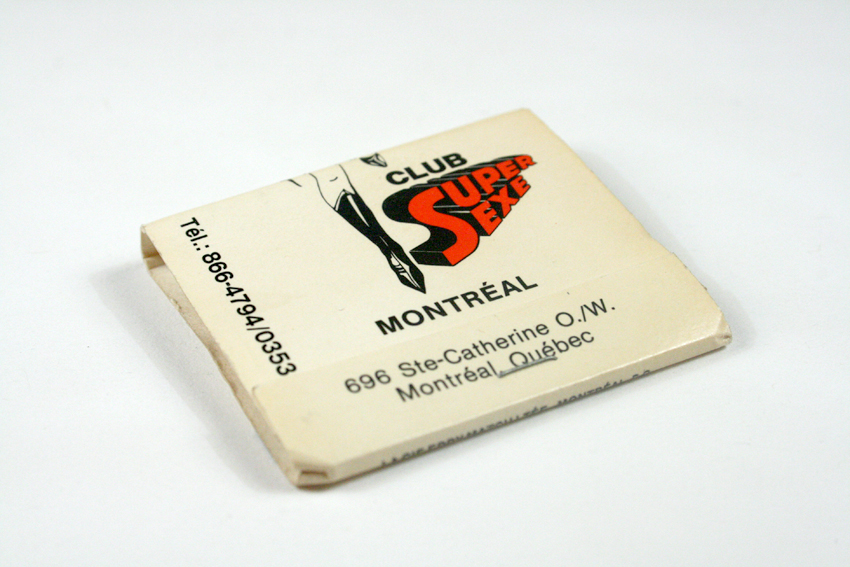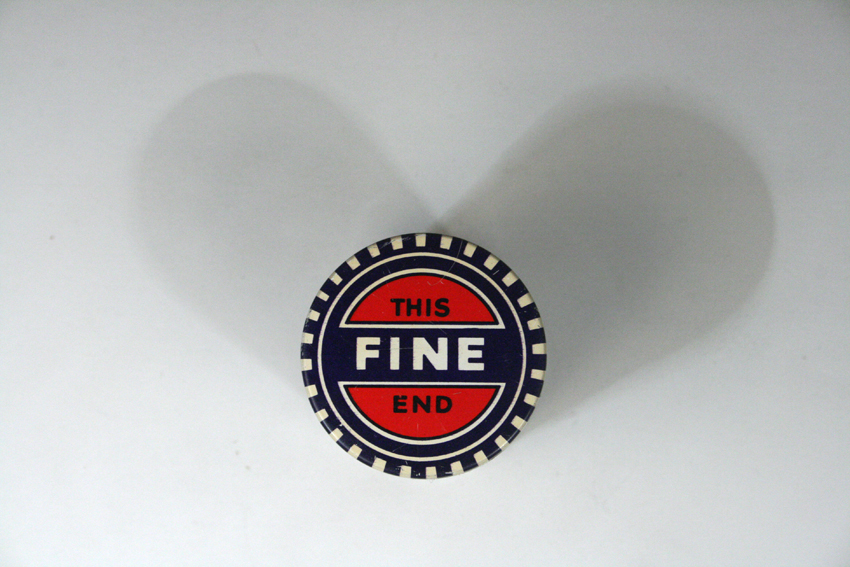Tutorial No.1
I had my first tutorial today with Laura, it went well and hopefully i need to just carry on. Laura asked us to send her a brief overview of our territories to get to know what was going on and one of the things was listing 3 weaknesses and 3 strengths with the project- this was interesting as it helped me get out some of the things i was thinking about but hadn't externalised- some things were: that i think people outside of a design context (and of course within it) will be able to relate and engage with the project, i reckon everyone collects something- (this is something i need to come back to and explore more- i think a questionnaire for the moment would suffice with a follow up 'collection of the week' book for some of them to be photographed and displayed.) Mini projects are good. I need to get more people involved- collectors, curators and people who might be interesting. I've been wanting to do this but my to-do list is finally getting shorter and so i should be able to get involved on another level next week- interviews, by either email or video will be good. I also want the time to do some drawing- bad Luke- draw all the time.
Terratories/ Things I Have Made
Had our territories presentations, I presented around collections and accumualting, curation, criteria and frames & boundaries. Here are some of the things I put in that I've been making the past week or so. 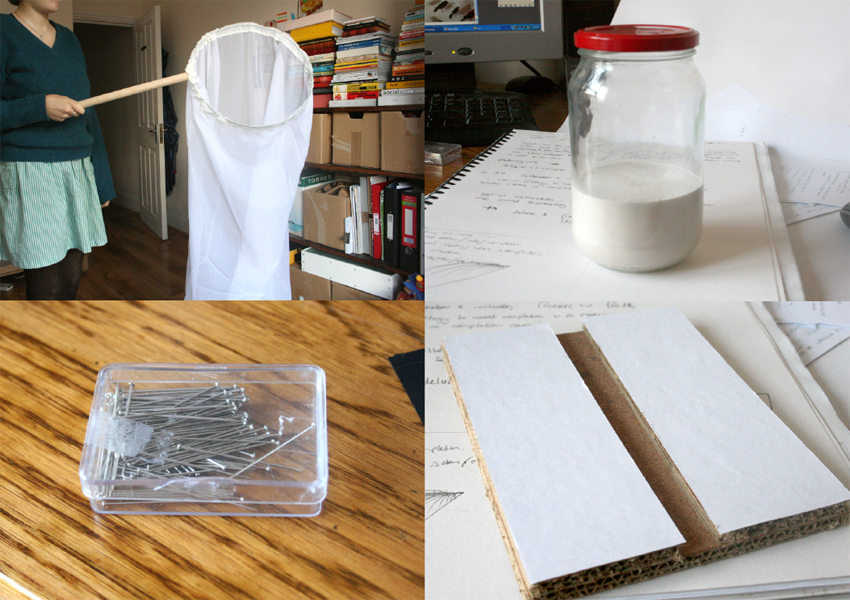 This is the paraphernalia needed to collect, kill, mount and display butterflies and moths. I'm looking at the process with a view to creating some kind of machine that will collect and display in one artifact- perhaps the jar- i like the likeness to taxidermy display glass domes.
This is the paraphernalia needed to collect, kill, mount and display butterflies and moths. I'm looking at the process with a view to creating some kind of machine that will collect and display in one artifact- perhaps the jar- i like the likeness to taxidermy display glass domes. 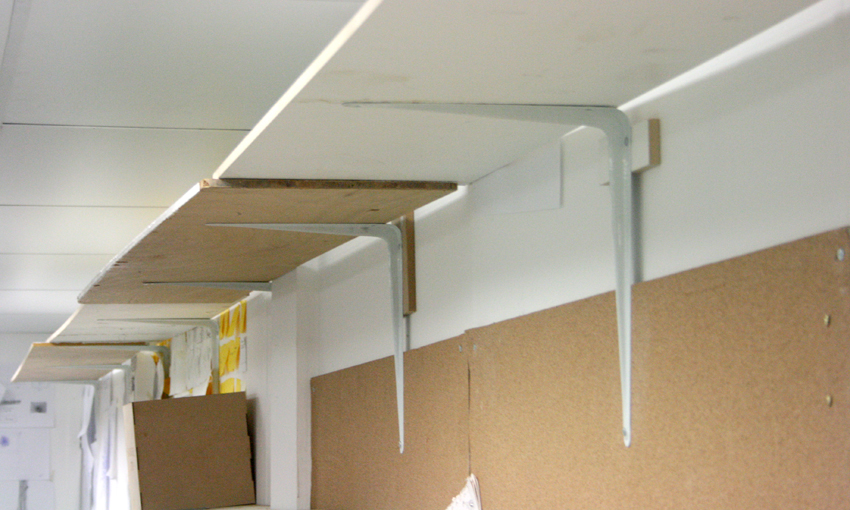 This is a very long shelf, about ten metres, in the studio. I created it as a space for a collection to occur but one which changes as people move things on and off it. It's just sort of looking at the boundaries for a collection and thinking about seriality in collections. It was directly inspired by the last Russel W. Belk quote from the previous post.
This is a very long shelf, about ten metres, in the studio. I created it as a space for a collection to occur but one which changes as people move things on and off it. It's just sort of looking at the boundaries for a collection and thinking about seriality in collections. It was directly inspired by the last Russel W. Belk quote from the previous post.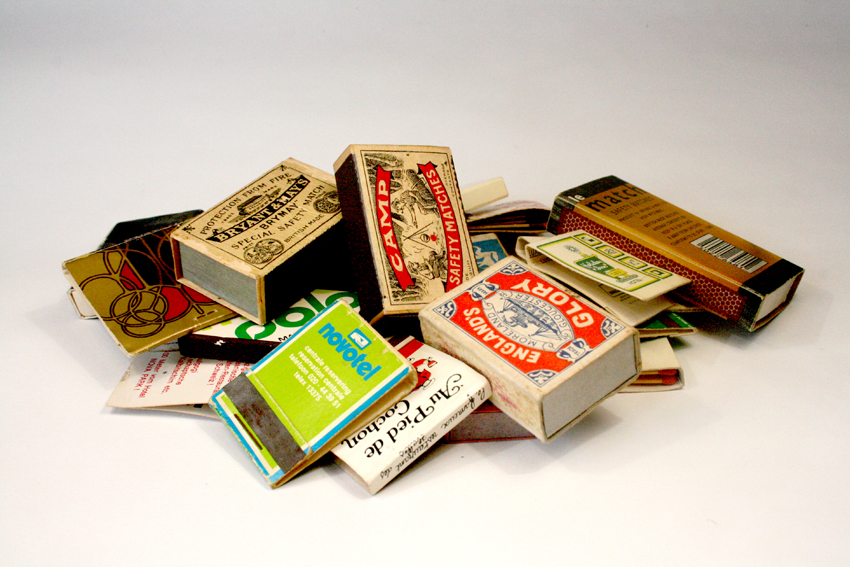 This is a pile of matchboxes. I intend to collect and curate an 'exhibition' a week- I was originally worried about what format this should take, an actual physical display would be too cumbersome and not bounded enough, a website would be forever unfinished and I didn't like that. I settled on a book- hopefully inkjet print when i get a printer and saddle stitched- this gives a consistent format for the curation side of things to be given more scope- i intend to use different labeling and organising systems- mainly to play and use them and get a better understanding of them- I realise the flaws in the actual acquisition of my 'collections' i.e. they are not true collections due to the contrived nature in which they were obtained (these were bought as a set from Deptford Market) but the real purpose is in the curation and indeed of the once a week thing, i will, through repetition be collecting collections.
This is a pile of matchboxes. I intend to collect and curate an 'exhibition' a week- I was originally worried about what format this should take, an actual physical display would be too cumbersome and not bounded enough, a website would be forever unfinished and I didn't like that. I settled on a book- hopefully inkjet print when i get a printer and saddle stitched- this gives a consistent format for the curation side of things to be given more scope- i intend to use different labeling and organising systems- mainly to play and use them and get a better understanding of them- I realise the flaws in the actual acquisition of my 'collections' i.e. they are not true collections due to the contrived nature in which they were obtained (these were bought as a set from Deptford Market) but the real purpose is in the curation and indeed of the once a week thing, i will, through repetition be collecting collections.
Notes on... things i've seen
 I went to the John Soane museum at the weekend as i heard he was a collector extraordinaire- there was books and marble everywhere, hanging off every wall- the place seemed to drip and it was awesome. I especially liked the way he catalogued stuff, every thing seemed to be in it's place and had little numbers on things- one room which caught my attention was one where the walls could either slide, or were hinged or something and behind the wall covered in paintings were more paintings- layers of collecting is nice. Links in nicely to my stuff with storage and display.
I should also reflect on the bottom drawer exhibition we went to at John Soane's Pitzhanger Manor in Ealing. A great exhibition which looked alot at collecting and display and the way the objects we keep are interacted with. All the stuff from the loft was placed in 2 rectangles on the floor of the gallery and it was weird to see the collection in an order but not be able to be seen or investigated, it had been carefully placed but in piles or on top of each other to invite you to view from different angles- there were also photos from exhibitors homes on the walls- of the things they kept and had either stored or displayed. The pictures picked up tiny idiosyncrasies and detailed the subtle, interesting banality of the homes, they really gave a feeling as to the exhibitors character and what they found important.
I went to the John Soane museum at the weekend as i heard he was a collector extraordinaire- there was books and marble everywhere, hanging off every wall- the place seemed to drip and it was awesome. I especially liked the way he catalogued stuff, every thing seemed to be in it's place and had little numbers on things- one room which caught my attention was one where the walls could either slide, or were hinged or something and behind the wall covered in paintings were more paintings- layers of collecting is nice. Links in nicely to my stuff with storage and display.
I should also reflect on the bottom drawer exhibition we went to at John Soane's Pitzhanger Manor in Ealing. A great exhibition which looked alot at collecting and display and the way the objects we keep are interacted with. All the stuff from the loft was placed in 2 rectangles on the floor of the gallery and it was weird to see the collection in an order but not be able to be seen or investigated, it had been carefully placed but in piles or on top of each other to invite you to view from different angles- there were also photos from exhibitors homes on the walls- of the things they kept and had either stored or displayed. The pictures picked up tiny idiosyncrasies and detailed the subtle, interesting banality of the homes, they really gave a feeling as to the exhibitors character and what they found important.
I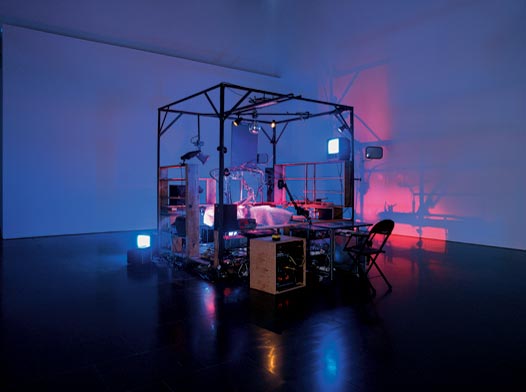 also went to Modern Art Oxford at the weekend- very good, (and some beautiful identity and poster work for the museum i have to say) It was curated well with no explanation as you went round and then a 15 minute documentary with the curator and the artists about the work- that's the way i like it. The work being shown was by Janet Cardiff and George Bures Miller and was teh sweet. My favourite piece was a sculpture called 'The Killing Machine' and it started with a big red button with a spotlight that you had to press to start it and then there was a light and a speaker moving around this big frame and these robotic arms began to observe and look investigatively at this reclining electric type chair. The music crescendo after a while and the robot arms began to attack the chair with pneumatic pistons- i make it sound whack but it was awesome- the music created this narrative effect, the robots seemed very real, or had personalities or whatever due to their form and also their lights which behaved like eyes, and the best part was the shadow which was cast on wall which was horrifically menacing and scary. Good art. It seems more relevant than it did at the time in relation to my project, when i think about pinning butterflies to boards and about the button at the beginning and the choice/ viewer initiated horror.
also went to Modern Art Oxford at the weekend- very good, (and some beautiful identity and poster work for the museum i have to say) It was curated well with no explanation as you went round and then a 15 minute documentary with the curator and the artists about the work- that's the way i like it. The work being shown was by Janet Cardiff and George Bures Miller and was teh sweet. My favourite piece was a sculpture called 'The Killing Machine' and it started with a big red button with a spotlight that you had to press to start it and then there was a light and a speaker moving around this big frame and these robotic arms began to observe and look investigatively at this reclining electric type chair. The music crescendo after a while and the robot arms began to attack the chair with pneumatic pistons- i make it sound whack but it was awesome- the music created this narrative effect, the robots seemed very real, or had personalities or whatever due to their form and also their lights which behaved like eyes, and the best part was the shadow which was cast on wall which was horrifically menacing and scary. Good art. It seems more relevant than it did at the time in relation to my project, when i think about pinning butterflies to boards and about the button at the beginning and the choice/ viewer initiated horror.
Pres
Seriously I'm so behind the times with these posts.
This is from a 4 day project about bringing about an upgrade through decay (like a snake shedding it's skin or muscle tearing to grow stronger.)
These are some pretty pictures of decay- looking at tearing, ripping, and dying things rather than the dead.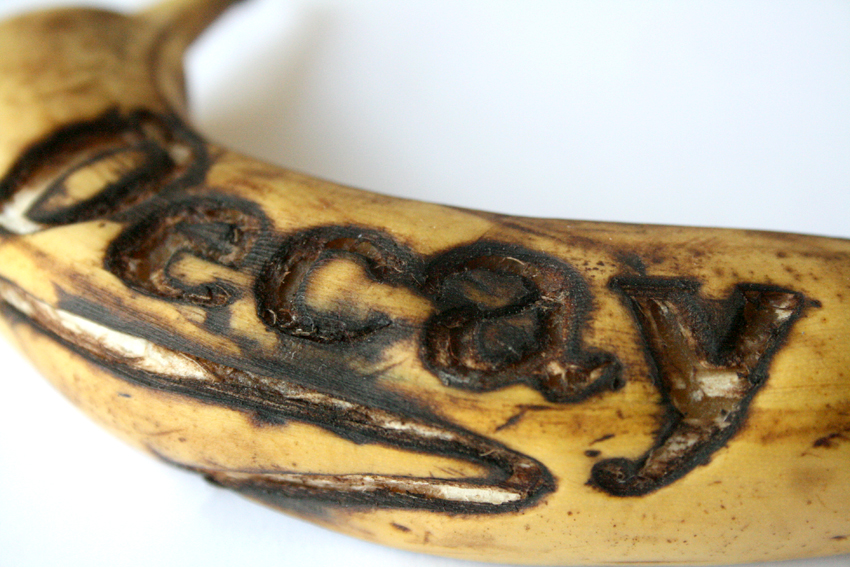
Messing about with time in decay looking at how time plays a part in it.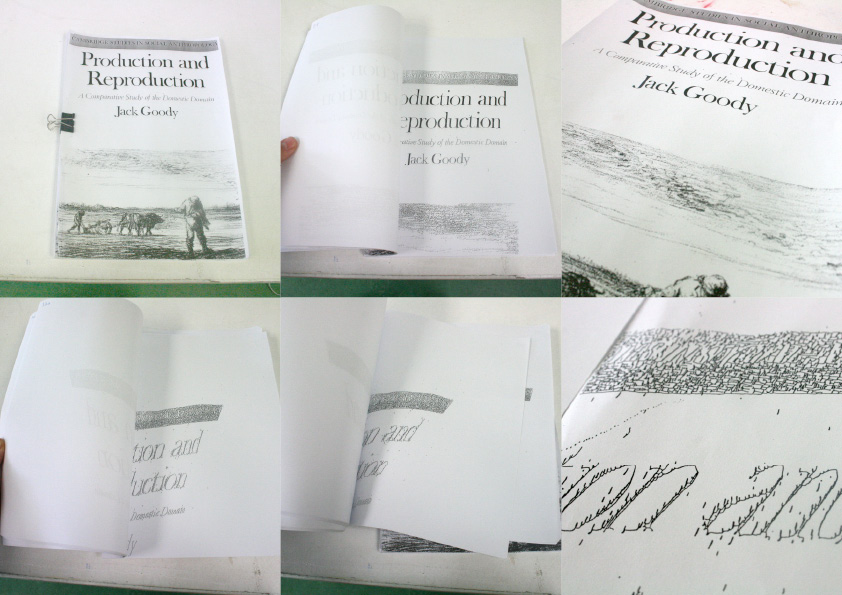
This was an experiment where a book cover was photocopied and then the copy was copied and so on for 150 pages creating a distorted, pixelated version.
These coins were created by leaving in coke for different amounts of time- they followed thinking around the ideas of wholeness and subtraction and asked 'when is an artefact at it's best?'
I created this stamp that would degrade over time to produce a smudge of its former self- this and the photocopies and the inbuilt change and decay in the outcomes produce interesting limited editions and groups.
This is as still from a short animation where the original shapes were copied and then that was copied, similar to the photocopies but more human and much more varied- the interesting part is that when 3 consecutuive frames are placed next to each otehr it is impossible to distinguish the first from the last. The decay is subtle and gradual. Each new variation is a change from the one before and if we accept that decay is change and that, as the saying goes, a change is a holiday (where a holiday is considered an upgrade) then decay = upgrade.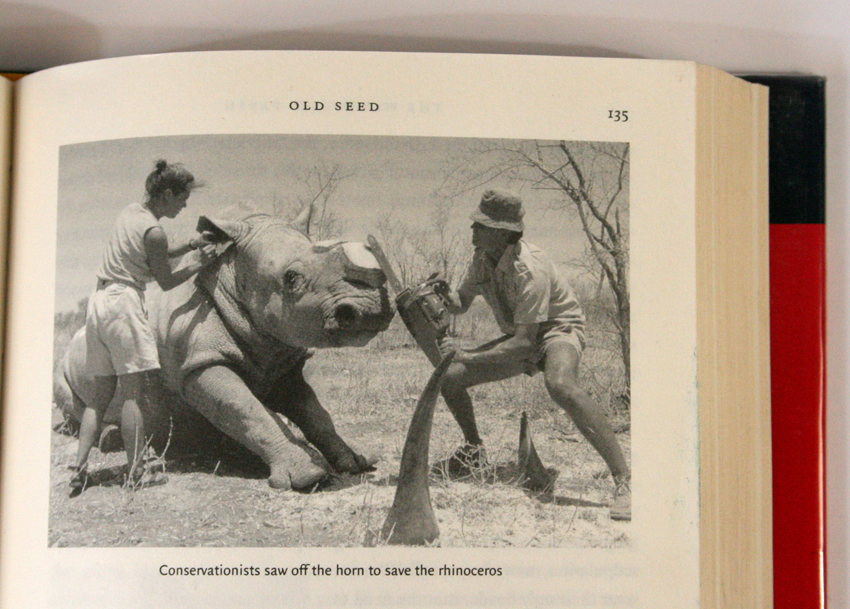
This is an image which hit me hard and fitted the brief well. It speaks of conservation and challenges the perceptions of decay.
Repetition, repetition, repetition. Another 4 day project, this time concerned with accumulation and the effects of repetition. 
These clock represent the start of my interest in collections and collecting- the separatley mundane clocks are brought together on mass to create an engaging collection.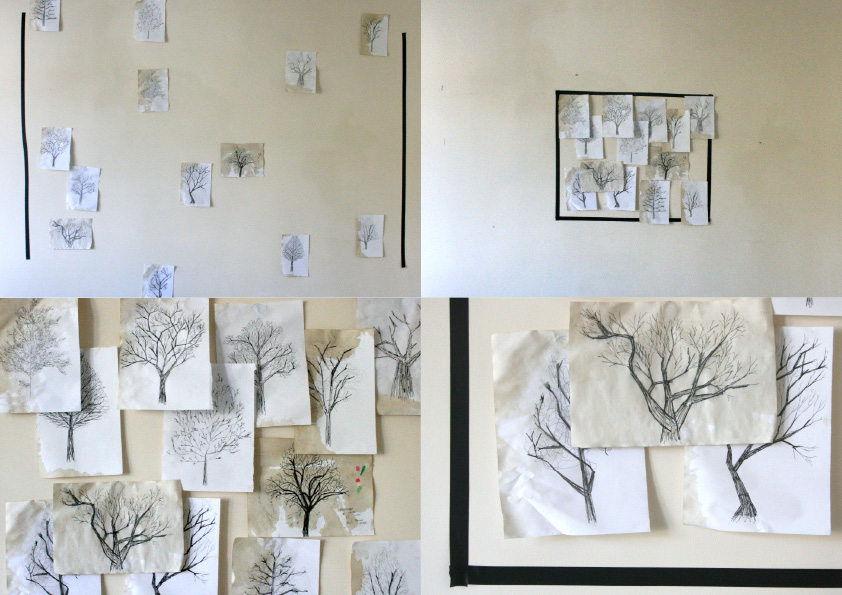
I began to think about how many trees make a forest- separatley there are 15 trees, but when put inside a frame the trees become bounded and layered creating a forest. I began to look at proximity through this aswell.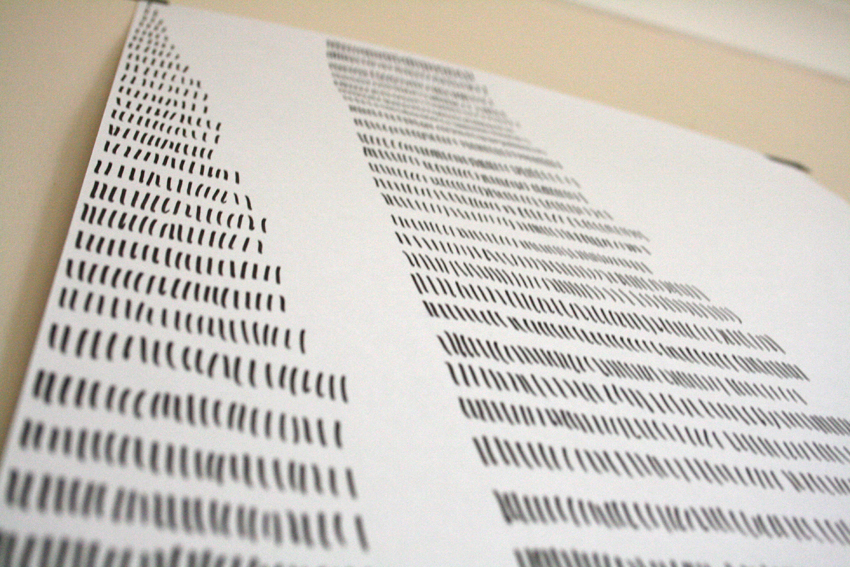
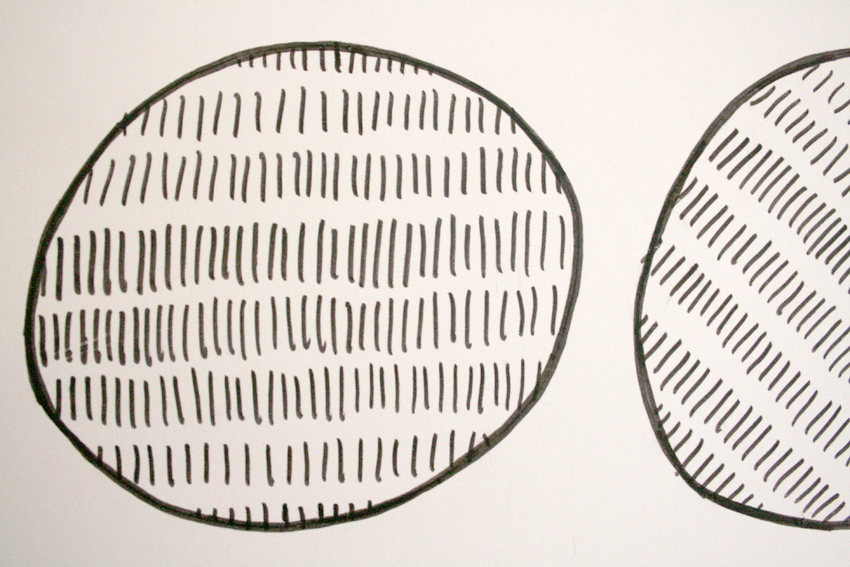
This experiment is concerned with rhythm and pattern, using the most basic form: a black line. I began to put these lines inside frames giving the image a greater pattern like appearance. Maybe the frame or boundary gives it's contents a context in which to be a pattern or collection. 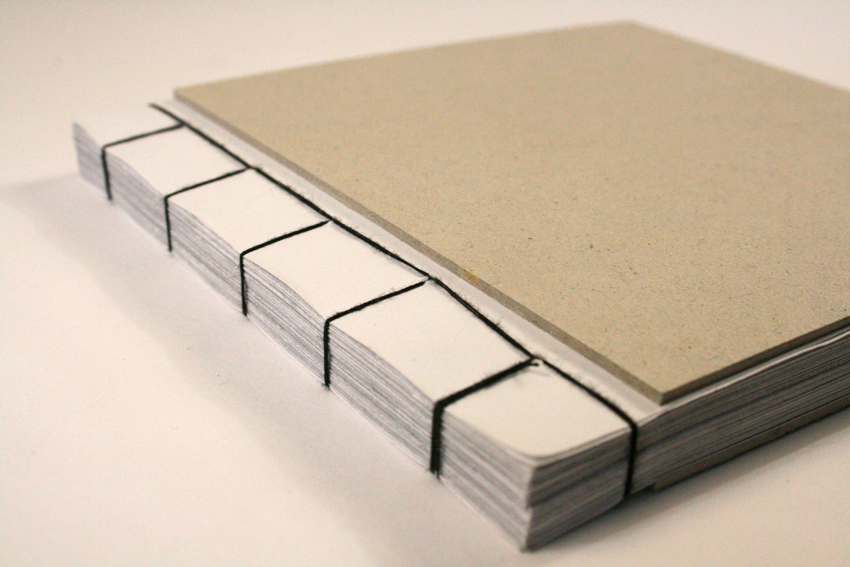



For part of the project I collected photos of house numbers: a seldom appreciated artefact- and created this book which displays them numerically, both as a collection and, due to separate pages, on an individual basis. In this format the numbers can be appreciated singularly and favourites can be concieved.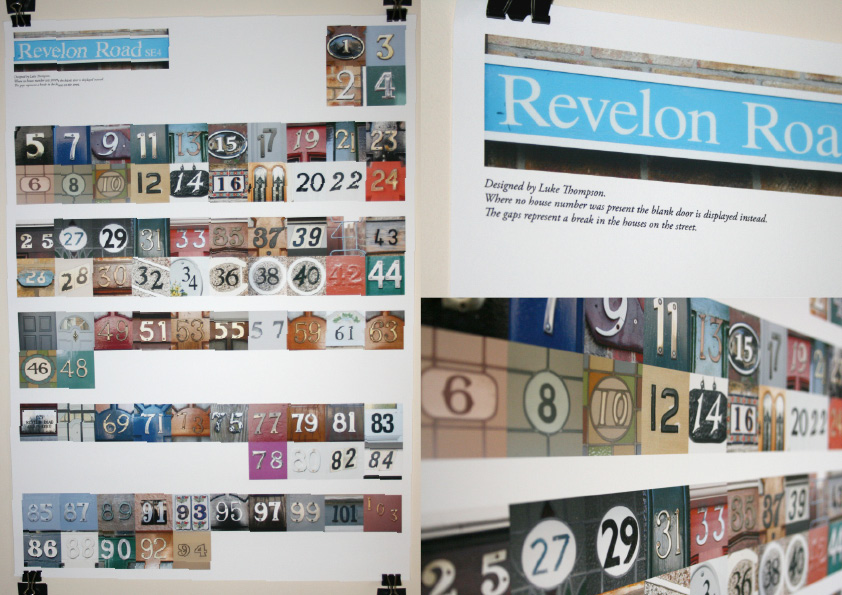
I also displayed them as a poster giving thought to their posisiton on the street in the layout so as to give more context. In the poster the whole group is viewed at the same time, leaving the space for similarities to be recognised- these similarities begin to form small patterns. 
Last Slide.
100 Post-its
I guess I'm kinda behind the times with these next few posts- not been hanging at my computer as much as normal i guess. As part of identifying what we want to do for our final project we began by writing 100 hundred ideas on 100 post-its, easier said than done i found. After that we put them on the walls of the studio in categories which we found common ground on and approximately 24 headings developed containing in total approx 5000 post-its (54 people in the class). Every heading was assigned two people- and then these guys split the post-its in their heading into categories based on similarities or whatever. Then 3 brief ideas were presented and voted on for the 2 to be carried on a be written up- From these resulting 48 briefs we individually picked 2 to run with for 8 days- after which we presented what we had done and what we aimed to do in the next couple of weeks.
These are my 100 post-its:
clocks,
shaving/ coffee ritual,
goosebumps/ hair raising,
opposites,
anesthetic/ numb,
stair politics,
echoes,
game theory,
stale/ stagnation,
breathing in sync/ walking in sync,
repetition,
collect & accumulate (validated through it's peers),
collector as subversive and transgressive,
collector as organiser + criteria,
collecting trophies/ memorials,
raymears total canoe,
labyrinth,
insurance,
fortification,
dead photos/ slides,
piano tune/ roll,
house numbers,
keats and the imagined,
palimpsest,
advertising through artifacts,
valid/ invalid,
polarity,
locke and temporal flux,
multi valued logic,
moths,
using existing forms/ structures,
volume (sound etc),
pattern,
type in real,
fade/ decay/ texture,
tidal swimming pool,
numerals/ counting,
self contained things- crabs & mussels,
guilt,
hand written notes,
excess materials,
accumulation,
choice as a limiter,
constraints as liberating,
light as a material,
exhibition touching,
swarms,
sacrifice, hornets/ holey ice,
end grain, end cardboard,
symmetry,
stencils,
mushrooms,
prosaic,
implication, pragmatic linguistics,
mnemonics,
sticky tape,
immediacy of use/ feedback,
pain- ache - desire,
prioritising,
the act of staring something,
guild,
compromise,
joints/ fixings,
power in consistency,
metal type,
trains/ tracks,
tickets,
toilet door signs,
habits,
tautology,
spectacle,
slow design,
sleep in a book, sheets of a book, bed time story,
where you are = how you are,
non- action,
las vegas hooker cads,
facile,
irrational,
complete,
loneliness,
gray(-)scale,
inevitability,
mutant,
entropy,
segment,
gargoyle,
scythe,
some chemists mean contrivance,
mittens on string,
compassion fatigue,
canal locks, woman on phone "are you here?",
drawing machines,
originate,
tattoo fonts,
peg type boards,
cathartic (sis),
copy,
perennial/ ephemeral.
